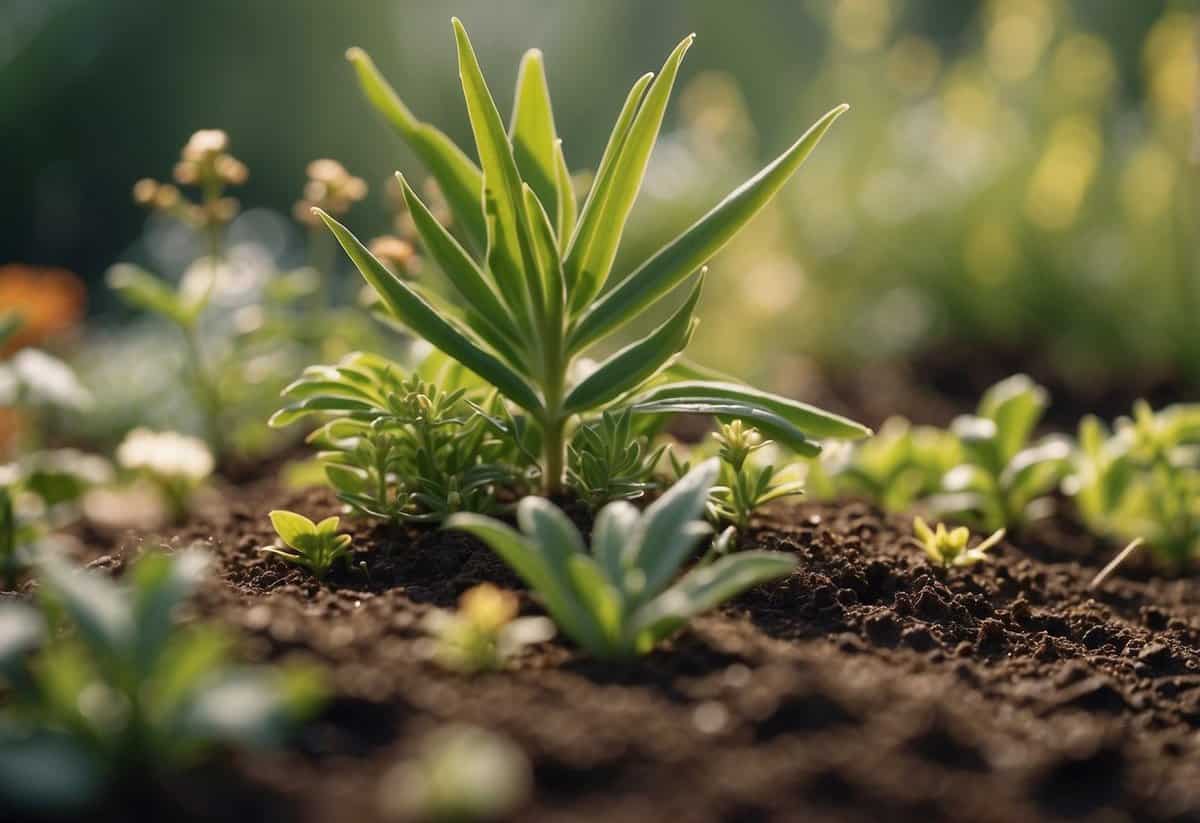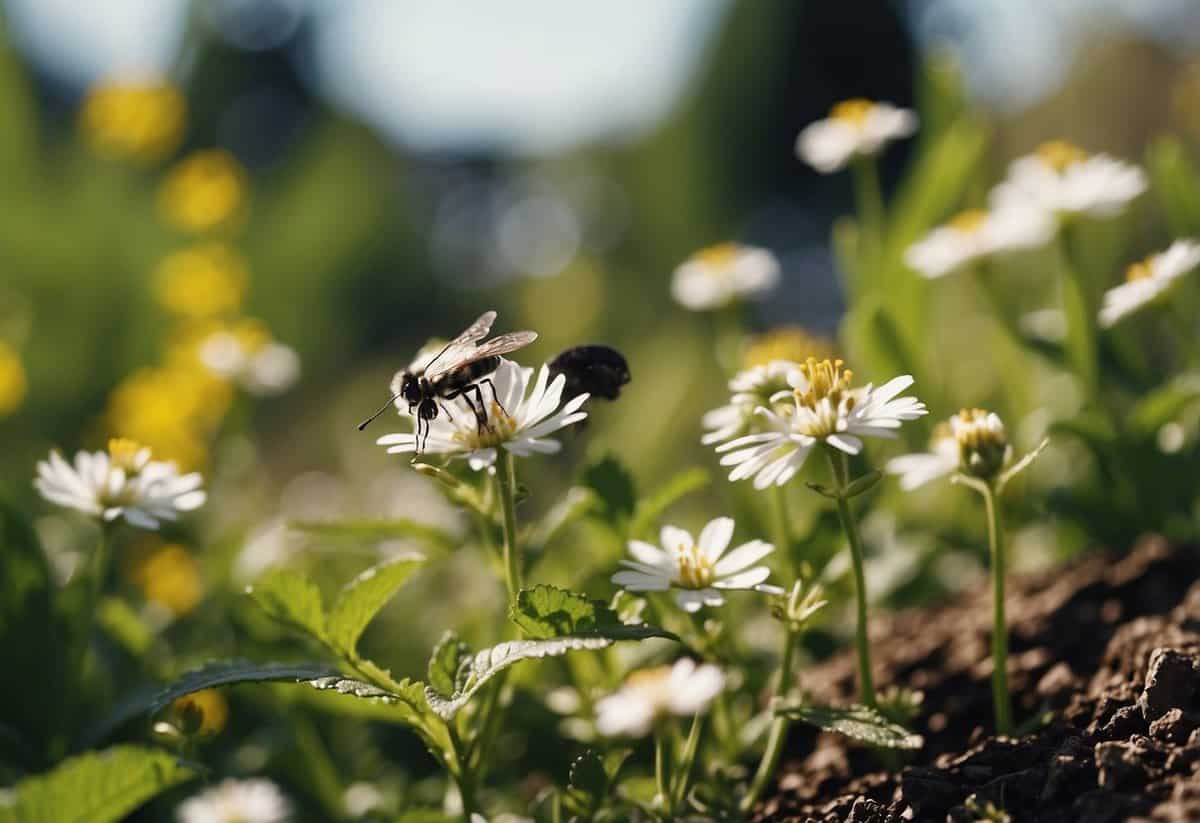Organic Garden Tips: Grow Your Healthiest Plants Ever
Are you looking to start an organic garden? Growing your own food without harmful chemicals is not only healthier but also rewarding. With some basic tips and guidance, you can create a thriving organic garden right in your backyard.

What are the best tips for getting started with organic gardening? Learning to improve your soil, choose the right plants, and use natural methods to control pests will make all the difference. Whether you’re a beginner or have some gardening experience, these tips will set you on the path to a bountiful harvest.
1) Use Compost to Enrich Your Soil

Compost is a natural way to boost your garden’s health. By adding compost, you improve soil structure and fertility. This makes it easier for plants to grow well.
Spread a 2-3 inch layer of compost around your plants. Avoid piling it against stems to prevent rot. Use compost as a top or side dressing in your planting beds.
Mixing compost into the top inches of your garden soil works wonders. It helps retain moisture and adds essential nutrients. Your garden will thank you!
2) Plant native species for better adaptability

Planting native species in your garden is smart. Native plants are already adapted to the local climate and soil, which means they need less water and care.
These plants thrive even with changing weather conditions. They can resist local pests and diseases better, reducing the need for pesticides.
You can explore more about choosing the right native plants here. By opting for native species, you help create a healthy ecosystem in your garden.
3) Implement Drip Irrigation Systems

Drip irrigation is a great way to keep your garden well-watered and healthy. This system delivers water directly to the roots, reducing waste.
Drip irrigation saves water by providing a slow, steady supply. You set it up with tubes and emitters that you place around your plants.
Using a timer, you can control when and how much water your garden gets. This helps avoid overwatering and keeps your plants happy. For a full guide on setting up a drip irrigation system, visit The Spruce’s detailed guide.
4) Rotate crops to maintain soil health

Rotating crops is essential for a healthy garden. By changing the location of your plants each season, you can prevent soil depletion. This means your soil stays rich in nutrients.
Different plants consume and add different nutrients. For example, beans add nitrogen to the soil, while corn uses a lot of it. Rotating helps keep the balance.
It also reduces pests and diseases. Pests that target specific plants can’t build up in one spot. This makes your garden healthier and more productive.
Learn more about crop rotation from the Mother Earth News guide.
5) Use organic mulch to retain moisture

Using organic mulch in your garden can help retain moisture in the soil. By spreading a layer around your plants, you can keep the soil moist for longer periods.
Organic mulches, like compost, bark, and straw, not only help with moisture but also add nutrients as they break down. This improves the soil’s texture and fertility over time.
To effectively use mulch, spread it evenly around your plants, keeping it about 2 to 4 inches thick. Avoid piling it against stems and trunks to prevent rot. For more tips, check out this guide on using organic mulch in your garden.
Your garden will benefit from better moisture retention, improved soil health, and fewer weeds. Take the time to mulch properly and see the difference it makes in your gardening efforts.
6) Practice Companion Planting

Companion planting can help your organic garden thrive. By planting certain plants together, you can naturally fight pests.
For example, nasturtiums attract slugs away from your vegetables. Dill can keep tomato hornworms at bay. To prevent erosion, try ground cover plants.
Some plants support each other physically. Corn, beans, and squash are a classic trio that work well together.
Learn more about these combinations and other tips on companion planting to make your garden healthier.
7) Attract Beneficial Insects with Diverse Plants

To keep your garden healthy, it’s important to attract beneficial insects. These insects can help control pests naturally.
Plant flowers like goldenrod, zinnias, and marigolds. These blooms attract helpful insects like soldier beetles.
Creating a diverse garden also means including herbs like dill and fennel. These attract lacewings and other predators that keep pests in check.
Add a small area with moist sand or mud to attract butterflies. This encourages them to “puddle,” gaining essential nutrients while helping your garden thrive.
8) Use natural pest repellents like neem oil

Neem oil is a great natural option for keeping pests away from your garden.
To use neem oil, mix it with water and a little dish soap to help it blend. Spray the solution on your plants, focusing on the leaves and stems.
Always test on a small part of the plant first to ensure there’s no damage. Learn more
9) Start seeds indoors for a head start

Starting seeds indoors gives your garden a great jumpstart.
Gather clean containers and fill them with seed starting mix. Plant your seeds according to the package instructions.
Label each container to keep track of your plants.
Place the containers in a warm, well-lit area. Keep the soil moist but not waterlogged.
Your young seedlings will thank you with strong, healthy growth.
10) Harvest rainwater for irrigation

Collecting rainwater is an easy and eco-friendly way to water your garden. You can set up a system with a rain barrel connected to your downspouts. This will collect water from your roof every time it rains.
Using rainwater helps save tap water and provides your plants with chemical-free hydration. It’s a simple step towards a more sustainable garden. Check out this beginner’s guide to harvesting rainwater to get started.
Choosing the Right Soil

Choosing the right soil is key to a successful organic garden. The right soil ensures your plants get the nutrients they need, and it also improves water retention and drainage.
Understanding Soil Types
Soil comes in different types like sandy, clay, and loam. Sandy soil drains quickly, which can be good for plants that don’t like a lot of water. Clay soil holds water well but can become compacted, making it hard for roots to grow. Loam soil is often considered the best because it retains moisture but also drains well, preventing waterlogging.
To know your soil type, take a small sample, wet it, and try to form a ball. If it’s crumbly, it’s sandy. If it forms a sticky ball, it’s clay. Loam will be somewhere in between, holding together but not feeling sticky.
Optimizing Soil Health
For healthy soil, you need a balance of nutrients. Compost is great for adding organic matter, which improves soil structure and adds nutrients. Aim to mix in 1-2 inches of good compost each year. Adding mulch helps retain moisture and keeps weeds down, contributing to soil health.
Soil pH is also crucial. Most vegetables and herbs prefer a pH between 6.5 and 7. You can test your soil using a pH kit. If the pH is off, you can amend it with lime to reduce acidity or sulfur to increase it.
Mix nutrients like nitrogen, phosphorus, and potassium according to your plants’ needs. These are often found in balanced organic fertilizers. Adding micronutrients like iron and zinc can also benefit your garden. Make sure you’re not overdoing it and follow package instructions.
Watering Techniques

Proper watering is crucial for the success of your organic garden. Knowing when and how to water can make a big difference in the health and productivity of your plants.
Best Practices for Watering
Water Deeply and Infrequently: Deep watering encourages deep root growth, making plants more drought-resistant. Aim to water your garden deeply but infrequently, about once or twice a week, depending on weather conditions.
Timing: Water early in the morning or late in the evening. This helps reduce evaporation, so more water reaches the roots.
Water at the Base: Apply water directly at the base of the plants. This ensures the roots, not the leaves, get the moisture they need.
Check Soil Moisture: Before watering, check the soil moisture. Stick your finger into the soil up to the second knuckle; if it feels dry, it’s time to water.
Consistent Schedule: Maintain a consistent watering schedule. Plants thrive with regularity, so try to water at the same times each week.
Efficient Irrigation Systems
Drip Irrigation: Drip irrigation systems deliver water slowly and directly to the plant roots. This reduces water waste and prevents overwatering. Installing a drip system can be an efficient way to keep your garden hydrated.
Soaker Hoses: Soaker hoses are another great option. Lay them along rows, and they will slowly seep water into the soil. This method is both effective and economical.
Rain Barrels: Collecting rainwater in barrels can help you save on water usage. Use this free resource to water your garden during dry spells.
Automatic Timers: Consider using automatic timers with your irrigation system. They help ensure a consistent watering schedule, even when you’re not around.
Mulch: Apply a layer of mulch around your plants to retain moisture in the soil. This also reduces the frequency of watering needed.
Utilizing these techniques and systems will help you maintain a thriving organic garden while conserving water and ensuring your plants get the proper care they need.







